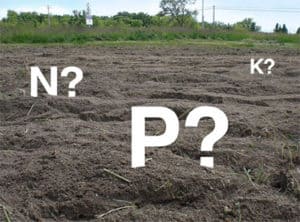Fertilizer and lime management must be based on the individual grower’s needs
To sustain profitability, growers’ approach to fertilizer and lime management must be based on the unique needs of the farm.
Dr. Matt Kleinhenz, associate professor at The Ohio State University, encourages growers to be proactive in managing soils, fertilizer, and lime, reminding them of how critical it is to get quality input from soil testing labs to develop a cohesive soil management plan and increase profitability.
“At minimum,” he explained, “it is required [by growers] to maximize the return on ever increasing investments in soil, fertilizer, and lime,” he said. By having an individually tailored plan in place, growers will be able to remain compliant with the mounting number of regulations.
pH And Overall Plant Health
 Kleinhenz said a soil pH of 6.0 to 7.0 is preferred. The pH level affects nutrient availability, which directly impacts plant health. A pH significantly higher or lower than the preferred range wastes fertilizer, because although nutrients are present, they may not be chemically available to the plant.
Kleinhenz said a soil pH of 6.0 to 7.0 is preferred. The pH level affects nutrient availability, which directly impacts plant health. A pH significantly higher or lower than the preferred range wastes fertilizer, because although nutrients are present, they may not be chemically available to the plant.
Kleinhenz also reminded growers to keep in mind that pH is measured on a log scale. Every change of one whole unit, such as 6.0 to 7.0, is a 10-fold change in hydrogen ion concentration. Therefore, a difference of even a fraction is meaningful.
“Soil pH tends to decrease naturally and with fertilizer application,” he explained, “[Soil pH] can be maintained in the optimal range with a variety of liming materials that vary in particle size, neutralizing power and cost.”
Nutrient Management Goals
By maintaining soil pH in the proper range, growers can then focus on balancing nutrient supplies with crop demand. Three nutrients — nitrogen (N), phosphorus (P), and potassium (K) — are managed most aggressively in production.
“These three elements,” Kleinhenz explained, “command about 99% of everyone’s collective attention in developing and implementing fertilizer programs. The goal is balance. The path is using the right fertilizer, at the right time, at the right rate, and delivered to the right place.”
Fertilizers vs. Crop Protectants
There is more to the story, though, as fertilizer costs are volatile. Kleinhenz noted that growers can spend more money on fertilizers than any other input besides labor.
Unlike controlling insects, weeds, and disease, maintaining a fertilization program is much less predictable.
“Soil fertility goes through boom and bust cycles,” he said. “Nutrient release fluctuates with season, temperature, rotation, and other factors. And, fertilizer availability is affected by soil type.”
Just how many soil types are there? The short answer is “a lot.” According to Kleinhenz, for example, there are more than 1,000 soil types in Pennsylvania and about 400 in Ohio.
“Ultimately,” he concluded, “fertilizer programs may be prescriptive but the prescription can be written only when the farmer’s operation and goals are well known.”
Once you have an accurate nutrient analysis, you can decide what inputs to use, knowing you are delivering only what is needed. KeyPlex offers a wide range of products designed for crops from tomatoes, potatoes, carrots, cole crops and more.
